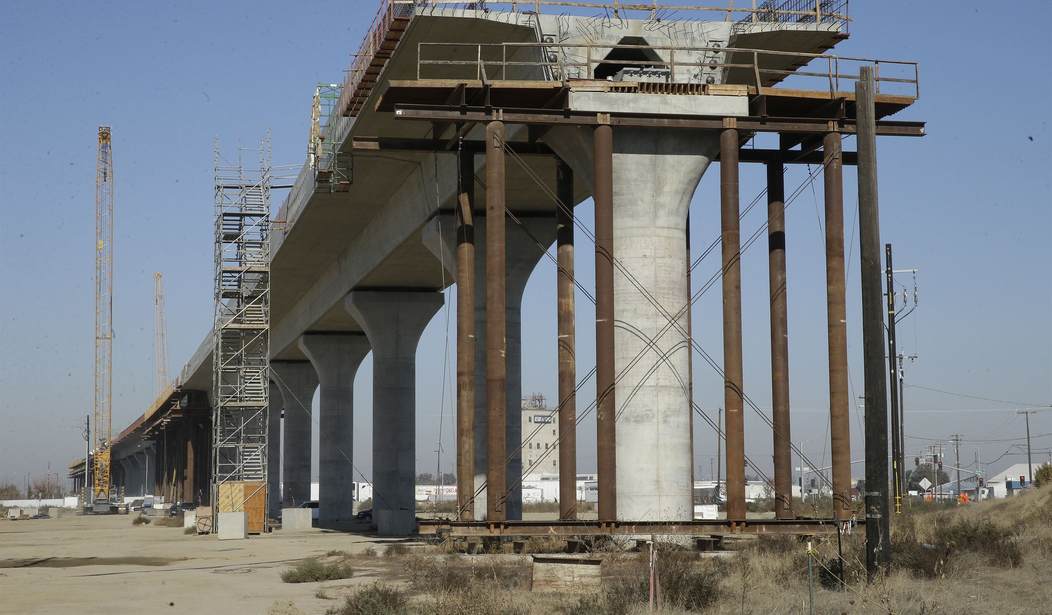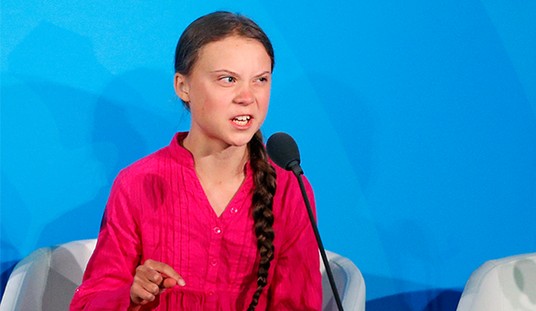California Governor Gavin Newsom kicked off this year by symbolically putting the first spikes into California's long-delayed high speed rail line. Like everything else about this project, the event was a bit misleading. The track being laid in January was not track for an actual high speed train but a siding that would eventually allow construction of the actual track, though no contract to lay it had yet been signed.
More recently we've learned about ongoing funding problems with the project which needs another $7 billion by next summer to keep going.
During a budget hearing focused on transportation in the State Assembly on Wednesday, Helen Kerstein with the California Legislative Analyst's Office told lawmakers the project faces a $7 billion budget gap and the funds need to be secured by next June. If not, Kerstein said it will create yet another delay for plans to finish the project's first segment between Merced and Bakersfield.
"There is no specific plan to meet that roughly $7 billion gap, we also think there is some risk that gap could grow," Kerstein said. "This isn't a way out in the future funding gap. This is a pretty immediate funding gap."
That's a very immediate funding deadline for a rail project that isn't scheduled to be operational this decade. That has led to a call for the state to finally cut its losses on this project.
A new report from the conservative advocacy group Unleash Prosperity calls for an end to federal funding for California's high-speed rail project and for the project's scope to be truncated to protect taxpayers...
"It's been a 25-year boondoggle now and the cost of this was supposed to be roughly $30 billion when the voters approved a referendum for this in California," Steve Moore, economist and co-founder of Unleash Prosperity, told FOX Business in an interview. "The latest estimates are now well over $100 billion, so that's a more than tripling of the cost of this big rail project."...
"The other obvious problem is that the whole idea of the high-speed rail was to go from Los Angeles to San Francisco, two huge metropolitan areas with huge populations. Well, because of a lot of geographical problems with getting through the mountains, they can't do that, so it's not going to start or end in San Francisco. So the ridership, if it ever gets built, is going to be multiples lower than what it was supposed to be when the whole thing was first designed," Moore added.
The Trump administration wants to cut off all future federal funding which means California would have to come up with that money on its own.
The Transportation Department duly began an investigation in February into $4.1 billion in grants awarded under former President Joe Biden, echoing Trump’s efforts in his first term to withdraw a $1 billion grant awarded by the Obama administration.
Transportation Secretary Sean Duffy said during a Wednesday appearance on Fox Business that the Federal Railroad Administration is close to wrapping up the investigation and that if “what many people have reported on is true, we’re gonna pull the funding for this boondoggle endeavor.”
Meanwhile, the only group that seems truly happy about this boondoggle are the unions. This has been great for them. They want many more years of over-spending with no end in sight.
Union leaders have made it clear that maintaining high-speed rail’s slice of the pie is their top priority. The project has employed nearly 15,000 union workers since construction started in 2015, more than any other infrastructure undertaking in the country.
“We believe it’s worked extremely well,” said Chris Hannan, president of the State Building and Construction Trades Council of California. “We’d like to see it get reauthorized for a longer period of time to help us have even more vision as we’re building out the state of California.”
It's possible this project could simply wait out the Trump administration. This has been ongoing for nearly 30 years at this point so another four years is really nothing in the scheme of things. The real question is whether other priorities will appeal to Democrats in the state more than keeping unions happy at some point.
Last year California expanded Medi-Cal coverage to illegal immigrants of all ages. That has cost the state nearly $9 billion in the first year, several billion more than predicted. That's money that could have gone a long way toward finishing the first leg of the high-speed-rail project, but instead the state is borrowing money to cover the Medi-Cal expansion.
At some point this rail project may die, not because Republicans oppose the wasteful spending but because Democrats want the money for some other boondoggle. That could happen anytime in the next 8 years before the first part of this project is finally open for business.







Join the conversation as a VIP Member